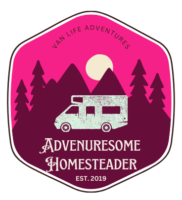Last Updated on August 18, 2024 by Nikole
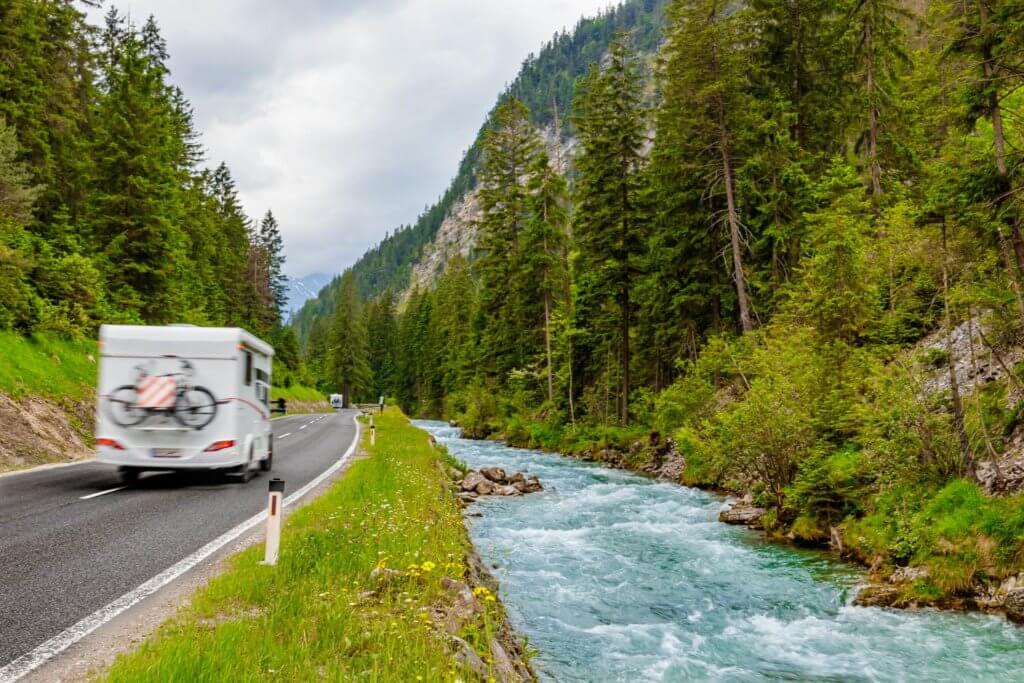
It’s intimidating when going through the mountains for the first time, especially when operating a camper van or big rig RV.
Abrupt bends, steep slopes, and fewer barriers make driving in the mountains hard- that’s why you learn some tips for driving through the mountains.
Come check out how we converted our camper van for under $500!
Making a strategy and preparing your car for mountain driving helps alleviate stress. Take certain precautions to help you enjoy the experience and put your mind at ease about what might occur.
Here are some simple tips and tricks to help you drive through the mountains with ease…even with a big-rig RV.
Also, check out our Camper Van Winter Gear if you plan on tackling your travels in the cold weather.
This post may contain affiliate links, which means I’ll receive a commission if you purchase through my links, at no extra cost to you. Please read full disclosure for more information.
1. Understand How Traffic is Different When Driving Through Mountains
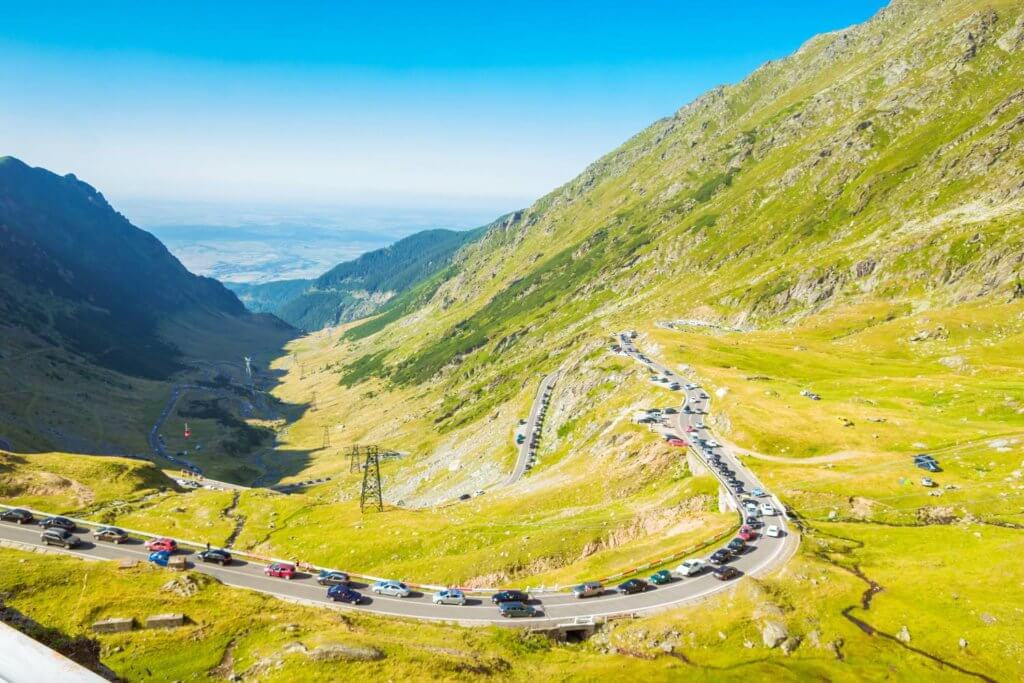
Mountain traffic is different than city traffic and can sometimes be unpredictable. Here are some tips to help you navigate the hills better:
- Allow for extra space between you and the vehicle ahead of you- sudden stops may happen at any moment.
- Be aware of warning signs for steep grades and turns. Always be careful to follow the speed limit.
- When traveling through remote areas, top of the gas tank- you never know when your next stop will be, especially in places like Arizona.
- Allow faster-moving traffic to pass you by pulling into the slow lane, turnout, or straightway.
- Do not pass slower-moving traffic unless you have a long clear road ahead. Never pass on any curve.
- Be aware that different states have different traffic laws– it’s up to you to know what those laws are.
2. Pack A First Aid Kit and Survival Gear
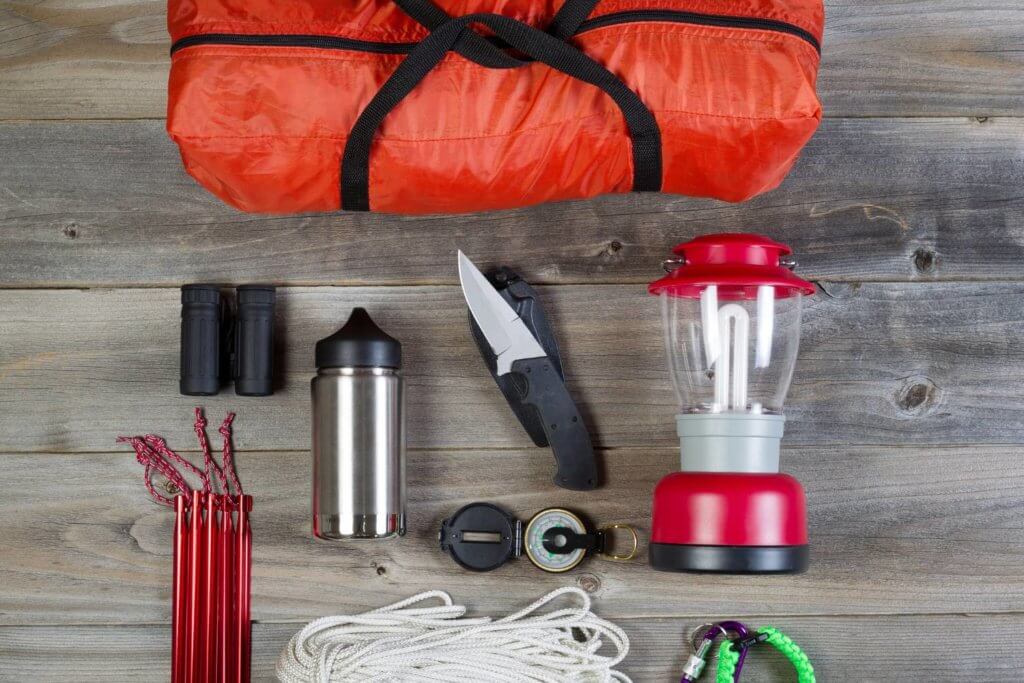
Many hazards can happen on the road, and it’s important to be ready if they do occur.
Maybe an animal jumps out, and you swerve off the road totaling your vehicle. Maybe the car next to you swerves in your lane, and you find yourself in a ditch.
On lengthy road excursions, especially in the mountains, survival equipment is frequently required. You never know when you may have an accident, and the tow truck won’t be able to reach you for a while.
Heaven forbid you should be in an accident without a mobile signal, but if you are, a roadside emergency pack stocked with survival supplies will enable you to survive for a few days.
You may discover how to put together your roadside emergency kit. Here are several items you should include on your mountain drive:
- first aid kit
- 3-in-1 safety tool
- food
- water
- blankets
- extra clothes
- tire chains in case of winter weather (Check out our post on this here)
3. Check the weather
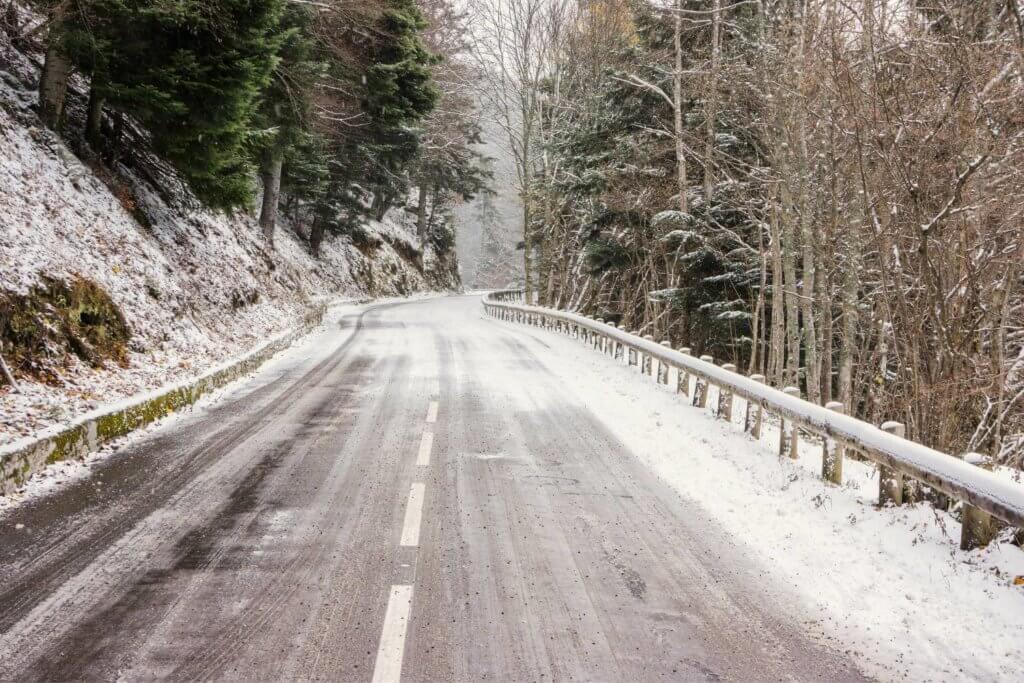
Look a few days out before starting your trip into the mountains to be sure the weather appears favorable. You want to avoid driving through major storms, rain, and snow- if you can help it.
Unfortunately, no one can predict the weather with absolute certainty (and to be honest these weather apps are anything but accurate).
However, you may check to see if any significant storm systems are heading in your direction. If so, you might want to change your plans.
During the snowy months/areas always be prepared with snow tires for your camper van and always winterize your van before embarking on an adventure.
4. Be a Prepared Driver While in the Mountains

Although you can’t plan for every scenario that can arise when driving in the mountains, you can check a few items on your car to be ready for the worst- that would include:
- Checking your vehicle over
- Gas is full
- You have a spare tire
- Your headlights are working
- Your break and turn signals are working
- Check Fluids
- Battery
5. Check over your vehicle
To be the most prepared for your journey through the hills, check over your entire vehicle. Make sure your headlights, blinkers, and windshield wipers work properly.
You can also look at your tires to make sure none of them are bald or leaking air. Sometimes an air leak isn’t noticeable until you start driving.
Gas
Sometimes you can’t find gas stations for miles while driving through the most remote part of the mountains.
Be sure to fill up before you start on your journey. If you enter the mountains and see a gas station, fill up again.
I’ve been stranded one too many times while driving our Ford Transit Connect and I recommend filling a spare gas can and carrying it with you on the roof storage. (We have also been stranded on our boat as well, we always bring a gas can haha)
Spare tire
Your roadside emergency kit for mountain driving should include a spare tire, but because it is so important, it deserves its own section.
The doughnut that comes on the majority of cars is usually smaller and less sturdy than the other tires.
Wherever your spare tire should go, make sure you have a full-size tire there instead. If you have a doughnut on your car, you should only drive for 50 miles.
There may be a few tire stores here and there in mountainous locations. Even then, they could have a full schedule for a few days.
If you have a full spare tire, you won’t have to worry about being stuck or having to pay exorbitant towing costs.
Headlights, Breaklights, Turn Signals
Lighting can be the difference between life and death when mountain driving—headlights alert oncoming traffic. You should have your lights on if it’s raining, dark, cloudy, or foggy outside.
Same thing with break lights and turn signals, it’s dangerous to drive with malfunctioning lights- not to mention illegal.
Before embarking on your mountain driving adventure be sure to test that all of your lights are working properly.
Check Fluids
Check all your fluids before driving through the mountains. Oil, transmission, coolant, and windshield washer fluid are all things you should check and top off.
Battery
I can’t tell you how many times I’ve been stranded due to a dead battery, so it’s a good idea to check your battery life before long mountain trips.
Check out our post on camper van batteries and find the best one to suit your needs.
If you don’t have a way to check the life of your battery yourself, take your vehicle to Autozone for a free battery test.
You can also purchase a battery tester here on Amazon.
6. Be Cautious of Wildlife

Wildlife is a bit different when you are driving through the mountains than it is while driving through the city. Moose, deer, or elk are all possible animals you could come across that could cause severe damage to you and those around you.
Unfortunately, there is no way to avoid a dear crossing the road, but there are ways you can be more cautious.
Driving with your headlights on during evening, night, and dusk is a great way to reveal animals on the road. Keeping an eye on movement in the woods will also help you stay alert.
Whatever you do, don’t swerve- swerving could cause a wreck or cause you to flip your vehicle.
7. Be Aware of Other Road Hazards While Driving in the Mountains
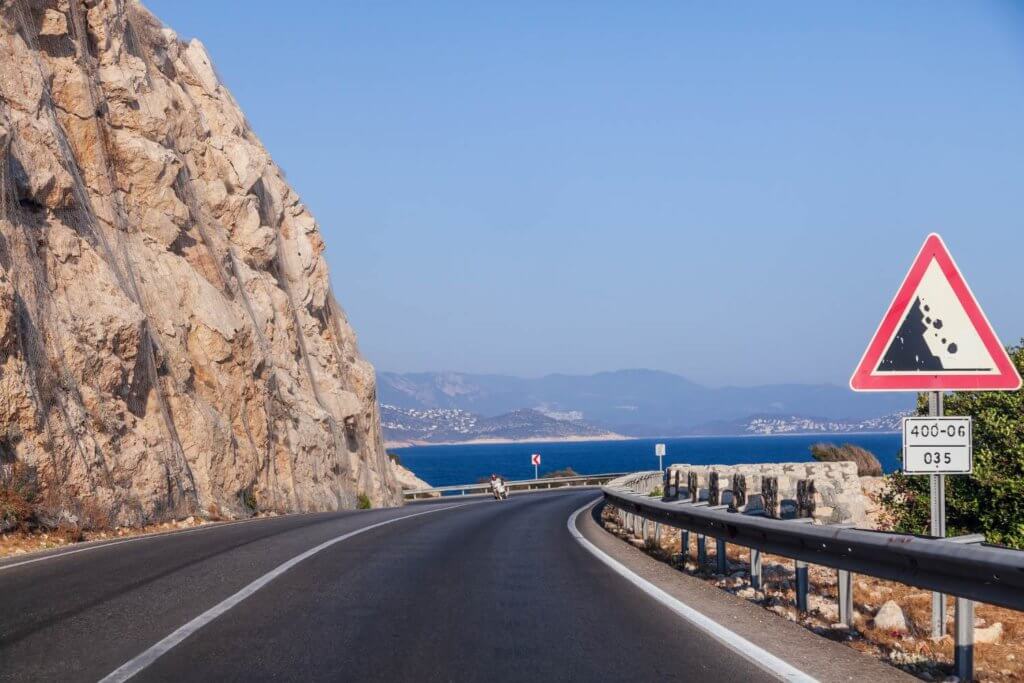
Not just animals should cause you to exercise caution. It would be beneficial if you kept an eye out for other cars, roadside debris, or potholes.
If possible, avoid driving late at night and only drive when you are most awake, ideally after a restful sleep.
If you find yourself in a predicament where you are super tired, pull off to a rest stop or an area where it is legal to free camp and catch a few winks.
8. Braking in the Mountains is a Different Story

Your brakes will wear out if you drive down hills and around abrupt corners, especially in the mountains.
The best way to brake when going downhill is to tap your brakes lightly as you descend- use this method before your vehicle gets up to speed. Never allow your vehicle to go over the speed limit in these cases, or you could lose control.
Mountainous terrain has steep twists, so take your time while approaching them. You risk losing control of your car if you apply the brakes in the middle of a turn.
Breaking in front of the turn will give you greater control, allowing you to ease into the winding roadways.
There are some other things you can do to help you with breaking around turns and down hills:
- Use a quick tapping method- this helps the breaks cool down before you start to break again
- Break before you go into a turn
- The National Park Service advises downshifting before beginning a descent because it will assist the vehicle slow down without requiring you to apply the brakes heavily. If your car has an automatic transmission, use “L” or “2.”
- Stay with a slow consistent speed. In other words, don’t accelerate when there is a straightaway and break on the turns (this will cause you to use the breaks even more)
- If you can smell your brakes (smells like burning rubber) it’s time to give them a break for about 20 or more minutes
9. Climbing Hills
To descend you must ascend first! Climbing a mountain doesn’t have to be complicated, but if your vehicle is bogged down by all your travel gear things can overheat.
Here are some tips for driving up the mountains:
- You need enough RPMs to maintain speed, therefore you need to downshift
- Sometimes it will help to turn off your A/C in your van or car
- You can always turn on your heater if your engine is running hot. This can buy you enough time to get pulled over and cool down.
10. Map Out Your Road Trip
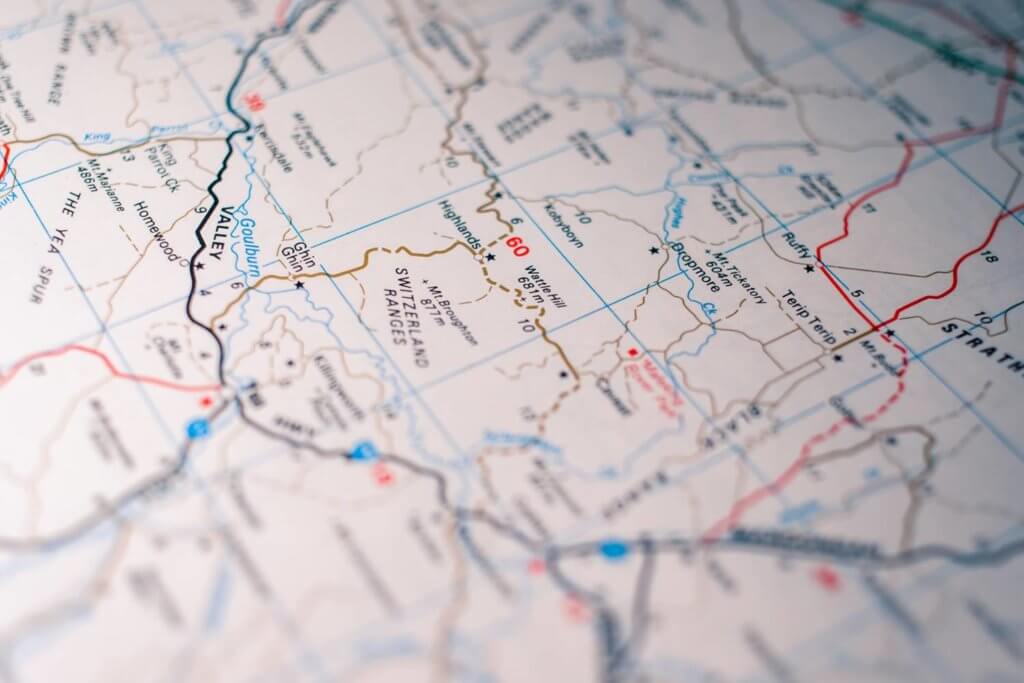
Even if you plan to use Google Maps to guide you, make a road trip itinerary.
In the mountains, you might not always have a strong mobile signal, and your phone’s GPS could go down. Just in case, print off a copy of your directions.
In addition to printing off instructions, you should always carry a map in your vehicle. You can purchase a detailed map of highways and roads somewhere like Walmart. You can locate these types of maps near the camping sections.
You can also print off a map of basic highways in the US to gain your whereabouts if the GPS on your phone stops working.
If you don’t know how to read a paper road map, it may be a great time to learn, especially if you are just starting to travel a lot!
11. Unpredictable Climate Changes
Mountainous areas sometimes see bizarre climatic fluctuations. At the base of the mountain, it might be rather warm, but as you approach the summit, blizzards can be present (you will typically see fluctuations like this in the Rocky Mountains).
Restock your roadside emergency kit so you’ll be ready for sudden developments in weather conditions (tire chains are useful in cold climates).
How do you get over a fear of driving in the mountains?

Talk to your friends- Talking to a friend about your anxiety about driving through the mountains can help alleviate stress and fears. Your friend probably has similar fears and can relate to your situation.
Prepare for the worst- prepare for your vehicle to have a flat tire by bringing a full-size spare tire, prepare for a situation where you are stranded by bringing a first aid and survival kit, and prepare for a situation where you get lost by bringing a map. In other words, have a plan for your what-if scenarios.
Focus on the road in front of you- Sometimes people will think about a situation as a whole instead of focusing on what is directly in front of them. Try concentrating on the road that is directly in front of you, that way, you can get rid of unnecessary distractions.
Take Someone With You– When you embark on a long journey, especially through the mountains, it helps to have a driving buddy. You can switch off driving times, or they can help with anxiety by having someone to talk to.
In Conclusion
Even though you are fully prepared to travel through the mountains, you still face unforeseen obstacles that threaten you. Be aware that anything can happen in the mountains, just like anywhere else.
